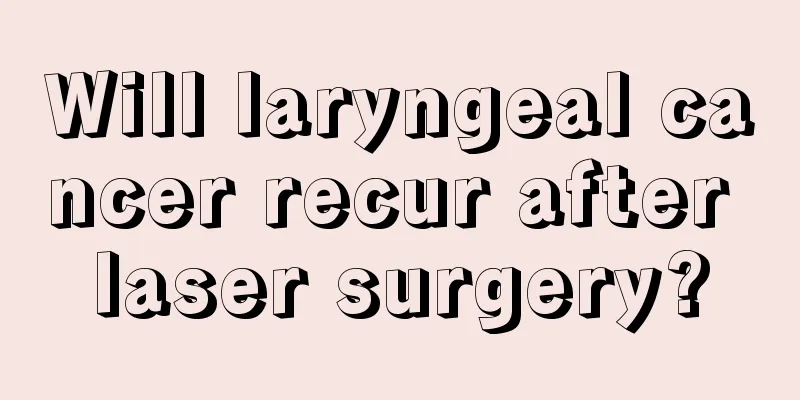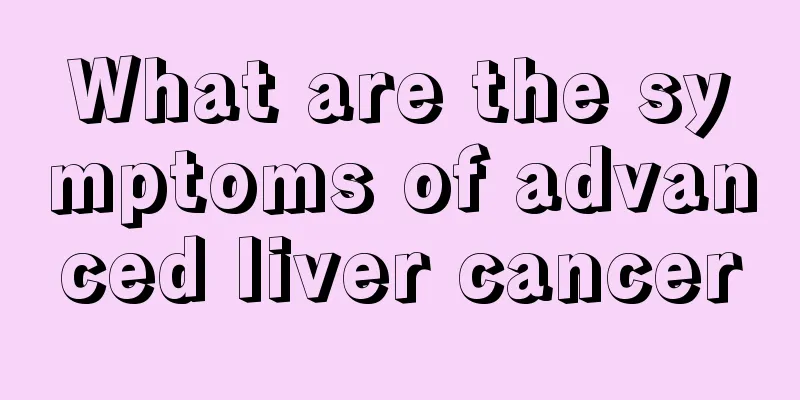Will laryngeal cancer recur after laser surgery?

|
Laser surgery is increasingly used in the treatment of early laryngeal cancer. CO2 laser surgery for laryngeal cancer has been widely reported abroad. It has only been gradually developed in China in recent years. This is mainly due to the high prices of CO2 laser surgery equipment and surgical microscopes, which are limited by conditions. Laser surgery for laryngeal cancer has a history of more than 30 years. In some developed countries, laser surgery for laryngeal cancer accounts for 30% of all laryngeal cancer surgeries, and there is a trend of increasing year by year. The 5-year survival rate of laser treatment for early laryngeal cancer is 85%, and its laryngeal function preservation rate is better than partial laryngectomy. With the improvement of equipment and the improvement of technology, the scope of surgical indications has been continuously expanded. It has developed from being limited to the treatment of early glottic laryngeal cancer to today's laser surgery for mid-to-late stage glottic and supraglottic laryngeal cancer. However, due to the limitation of hospital equipment, the differences in doctors' surgical techniques and different understandings of laser surgery, the depth and breadth of surgery are also different, and there is no standard scope of surgical indications. Laser is a technology that has gradually developed since the 1960s, and has been gradually improved and developed with the advancement of lasers. In the field of otolaryngology-head and neck surgery, two American otolaryngology-head and neck surgeons first began to apply this technology to clinical laryngeal surgery in 1972. The diseases treated at that time mainly included keratosis, nodules, polyps, cysts and carcinoma in situ of the vocal cords, and satisfactory results were achieved. Since then, it has been widely developed. Laser surgery is increasingly being used in the treatment of early laryngeal cancer. CO2 laser surgery for laryngeal cancer has been widely reported abroad. It has only been gradually developed in China in recent years. This is mainly due to the high prices of CO2 laser surgical equipment and surgical microscopes, which are limited by conditions. The combination of CO2 laser surgical equipment, surgical microscopes, and support laryngoscopes for laryngeal surgery has the advantages of no incision on the neck, high surgical accuracy, small surgical damage, fast postoperative recovery, good preservation of laryngeal function, shortened hospital stay, and reduced the economic burden on patients. In other words, patients can retain the functions of speaking, breathing, and pronunciation after surgery. Because tracheotomy is generally not required. Patients only need to be hospitalized for about 1 week, which not only reduces the patient's pain, but also greatly shortens the patient's hospital stay, and also reduces the patient's economic burden. CO2 laser micro-laryngeal surgery under support laryngoscope can make the surgery of early laryngeal cancer meet the minimally invasive surgery standards required by today's clinical medicine, and has achieved good results in clinical practice. The indications of CO2 laser micro laryngeal surgery under supported laryngoscope are early laryngeal cancer and precancerous lesions of the laryngeal duct, such as laryngeal keratosis (also known as laryngeal leukoplakia) and adult laryngeal papilloma. Laryngeal keratosis and laryngeal papilloma are prone to recurrence and easy to become cancerous. Among the precancerous lesions of the laryngeal duct, the canceration rate of laryngeal keratosis is the highest, which has been reported to be 20% to 40% of the canceration rate of adult laryngeal papilloma, and has been reported to be up to 80%. Therefore, in the treatment of precancerous lesions of laryngeal cancer, the complete resection of the first surgery is very critical. At present, the most suitable surgical treatment is CO2 laser micro laryngeal surgery under supported laryngoscope. In addition, benign laryngeal lesions can also be removed by CO2 laser surgery under fiber-supported laryngoscope, such as vocal cord polyps, vocal cord nodules, hypertrophic laryngitis, etc. The main method is to use CO2 laser to vaporize polyps and nodules. Children's laryngeal papilloma can also be removed by CO2 laser surgery, and the effect is very satisfactory. Compared with other surgical methods, it not only reduces the pain of children, but also reduces the financial burden of parents. Generally, tracheotomy is not required, which avoids possible complications of lung infection in children. CO2 laser surgery can also be used to treat diseases such as laryngeal stenosis and laryngeal paralysis. Early symptoms of benign and malignant lesions of the larynx mainly include hoarseness, discomfort in the pharynx, discomfort in swallowing, pain in swallowing, blood in sputum, etc. As the onset time increases and the tumor grows to a certain extent, symptoms of dyspnea may occur. However, tumors growing in certain parts of the body will show symptoms later or not obviously. In addition, diseases such as laryngeal stenosis and laryngeal paralysis may also cause dyspnea. Patients should be vigilant and should visit the otolaryngology department in time for timely examination and treatment. |
<<: How to reduce the high recurrence rate of early laryngeal cancer
>>: Can laryngeal cancer recur after complete resection
Recommend
What are the symptoms of a cold constitution
In traditional Chinese medicine theory, our human...
What are the specific symptoms of Mellie's syndrome
The disease type of Mei's syndrome is very sp...
How to calculate oxygen flow rate?
Oxygen inhalation is a relatively common medical ...
Can mosquitoes transmit AIDS
As sexual life becomes more and more open, variou...
Symptoms of formaldehyde poisoning
Formaldehyde is a common chemical substance and a...
How to prevent recurrence of kidney cancer after surgery
The recurrence of renal cancer after surgery has ...
Muscle soreness the day after fitness
Nowadays, people have very little time to exercis...
Can enhanced CT diagnose liver cancer? Not necessarily
Can enhanced CT scan confirm liver cancer? Enhanc...
How long can you live with poorly differentiated non-small cell lung cancer?
How long can you live with poorly differentiated ...
How long is the survival time of patients with brain metastasis of lung cancer who receive radiotherapy alone? About half a year
After suffering from lung cancer brain metastasis...
Home tricks for expired honey
Nowadays, many families often keep some honey on ...
Can advanced lymphoma be cured? What are the symptoms?
Can advanced lymphoma be cured? What are the symp...
Methods for stool examination for rectal cancer
One of the important causes of colorectal cancer ...
The difference between hazelnuts and macadamia nuts
In our daily life, many people like to eat nuts. ...
How long can one live with double lung metastasis in the late stage of lung cancer?
How long can you live with advanced lung cancer a...









